Teaching Instrumentation Laboratory
Description
Dr. Izzat Kazi
Supervisor
Mr. Malak Al-Khaldi
Supporting Staff
KFUPM
Bldg. 75 - Room ---
Dhahran, P.O. Box 5048
+966 13 860 2274
cls@kfupm.edu.sa
Sunday - Thursday
8:00 A.M - 4:00 P.M
KFUPM Faculty, Students, and Staff can utilize the facilities via booking through KFUPM RRM.
For outside KFUPM Community, you may book your reservations by registering at this link:
https://research.kfupm.edu.sa/RRM/Login.aspx
Description
Description
Description
Description
User Manual
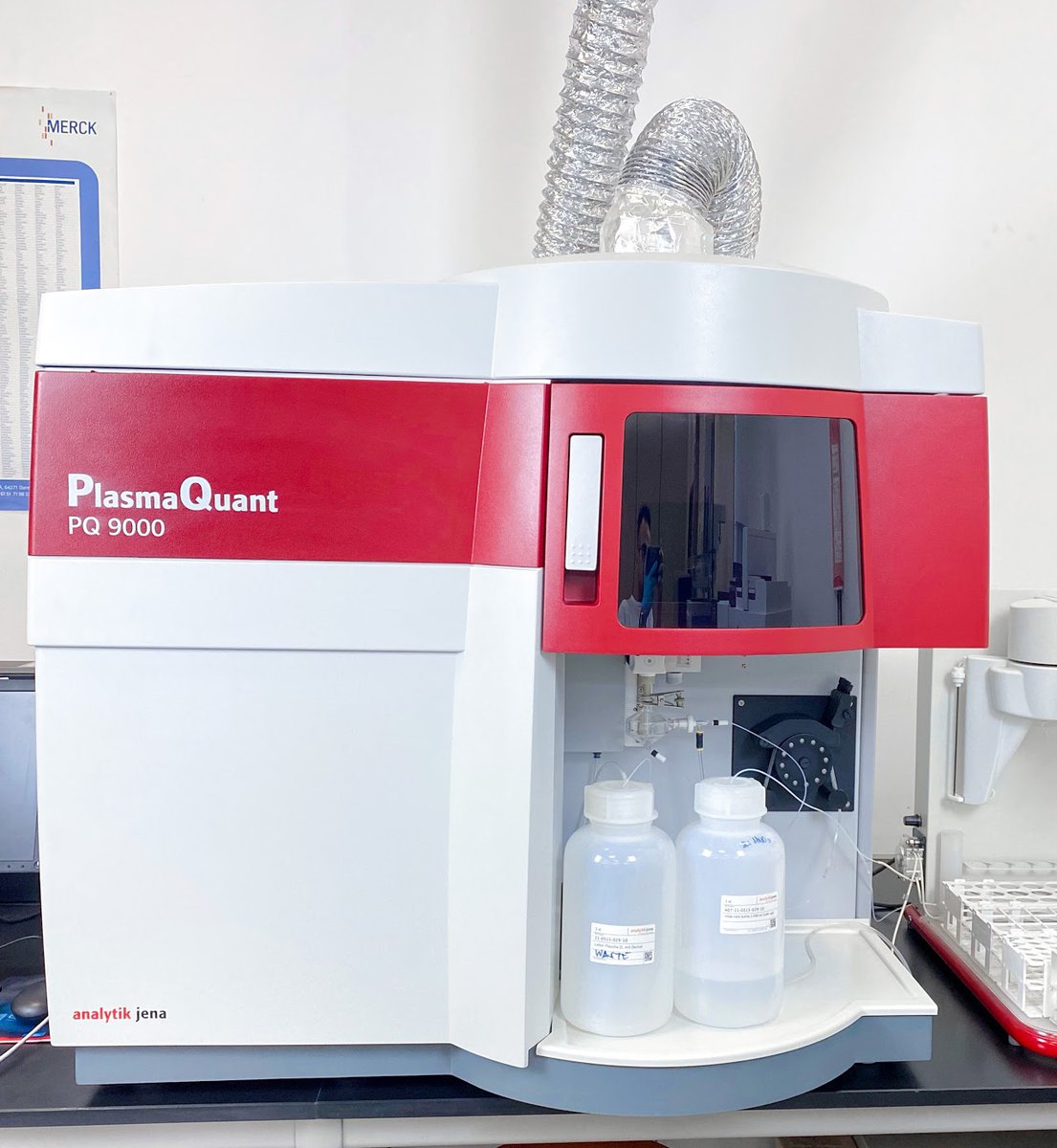
Location:
Chemistry department
Building #75, Room #230
Scientist In-Charge:
Name: Mr. Malak Al-Khaldi
Phone: 4588
E-mail: malak.alkhaldi@kfupm.edu.sa
ICP - OES
ICP-OES PlasmaQuant® PQ 9000 Inductively coupled plasma – optical emission spectrometry is a powerfultechnique that uses plasma as source on optical emission for analysis. Usually the samples are liquid and will beturned into an aerosol and then injected into the plasma.
Main Features:
- Can detects multi-elements at the same time.
- It can reach temperature up to 10,000 K
.- It can be used in oil and gas industry and analysis heavy metals.

Location:
Chemistry department
Building #75, Room #230
Scientist In-Charge:
Name: Mr. Malak Al-Khaldi
Phone: 4588
E-mail: malak.alkhaldi@kfupm.edu.sa
Thermal Analyzer
TGA/DSC – SDT Q600 is thermogravimetric analysis that measure the changes that happening to the sample during the heating and cooling process in the furnace.
Main Features:
- The temperature can be increased up to 1000 °C for Platinum cups, and for ceramics cups can reach up to 1500 °C.
- The purge flow system has a great capability that provides precise metering of purge gas to sample and reference.
- Furnace is easy-to-use due to its automatic furnace opening/closing and loading the samples and fast cool-down.
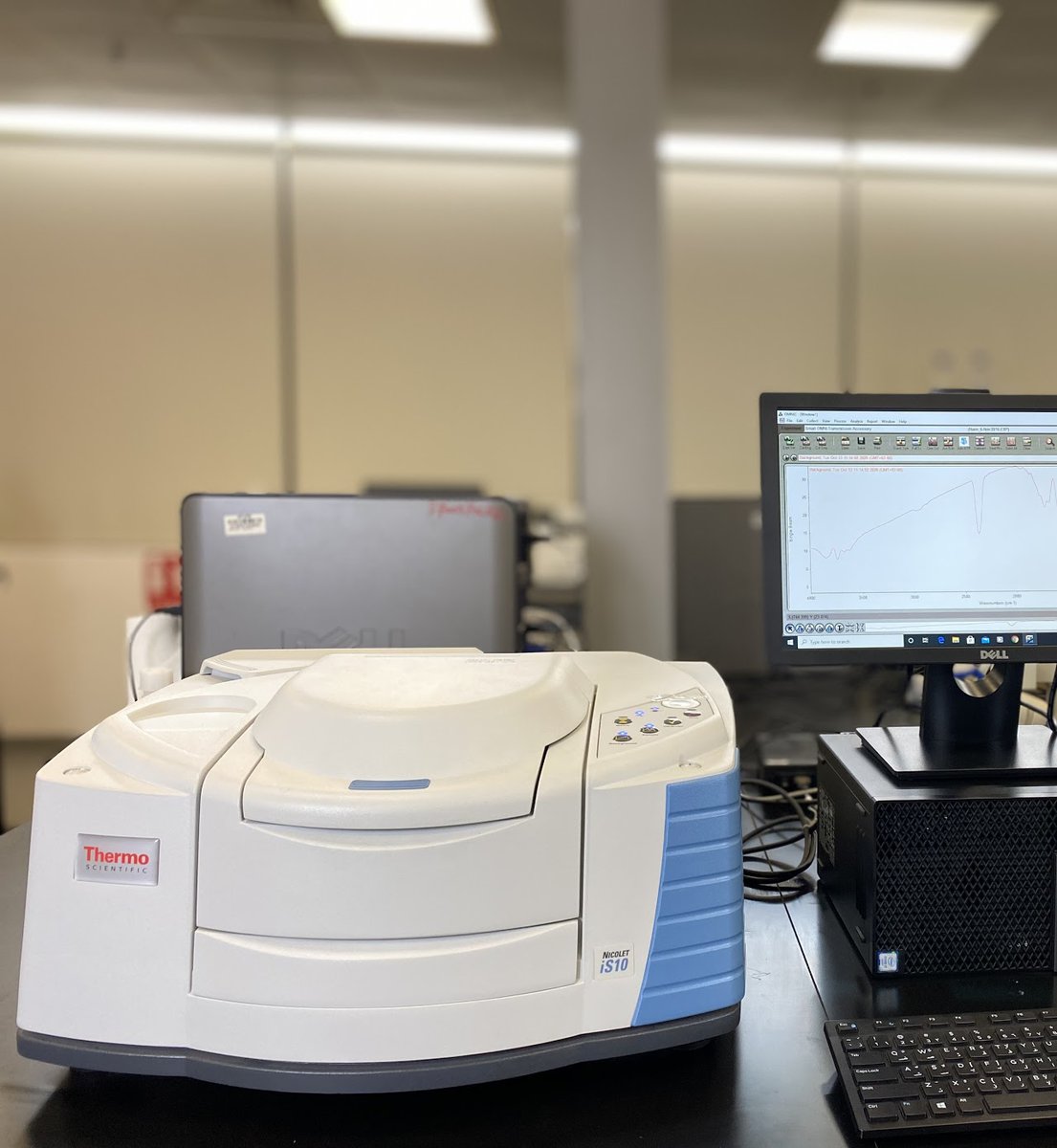
Location:
Chemistry department
Building #75, Room #230
Scientist In-Charge:
Name: Mr. Malak Al-Khaldi
Phone: 4588
E-mail: malak.alkhaldi@kfupm.edu.sa
Fourier Transform Infra-Red Spectroscopy (FTIR)
Thermo Scientific* Nicolet* iS*10 FT-IR spectrometer excels at rugged, precise, fast-paced operation, yet simplifies laboratory data collection to its most basic: load the sample, generate the spectrum, and press Print.
The Nicolet iS10 FT-IR spectrometer is a complete infrared spectroscopy system for routine analytical needs. The Nicolet iS10 delivers the highest confidence in the verification and identification of materials and is designed for maximum assurance in its ability to sample and solve challenging problems with a minimal investment in time. Designed for use by any skill level, this spectrometer allows many tasks to be completed with only one click.
Main Features:
Accurately discern multi-component samples: advanced LightDrive optical engine technology delivers higher spectral resolution(0.25 cm-1) and single-to-noise ratios (50,000:1) to help identify possible contaminants or characterize defects present in smallquantities
Improve data reproducibility: state-of-the-art infrared source eliminates hot spot migration, resulting in more consistent spectraldata, especially through an attenuated total reflectance (ATR) accessory
Streamline workflow productivity: multi-colored LED touch panel provides visual feedback on instrument status for increasedproductivity(ready, scan, alert); System Performance Verification (SPV) assures day- to-day results are trusted

Location:
Chemistry department
Building #75, Room #230
Scientist In-Charge:
Name: Mr. Malak Al-Khaldi
Phone: 4588
E-mail: malak.alkhaldi@kfupm.edu.sa
Polarimeter
The P-2000 is a configurable high precision digital polarimeter with many options for measurement range, sampling accessories and software applications. The P-2000 digital polarimeter can also be field up graded as application requirements change. Optional wavelength filters and source lamps cover a wide range of analytical wavelengths from UV-Visible to NIR in addition to the traditional sodium (589nm) lamp used for regulatory compliance.
Main Features:
For fast measurement, the P-2000 has a response speed of up to 6° per second, with a resolution of 0.0001°. The wide dynamicrange from 0.001° to ±90° enables measurement over a very broad range of concentrations. The sample chamber includestemperature measurement with the actual temperature constantly updated and displayed on the control screen.
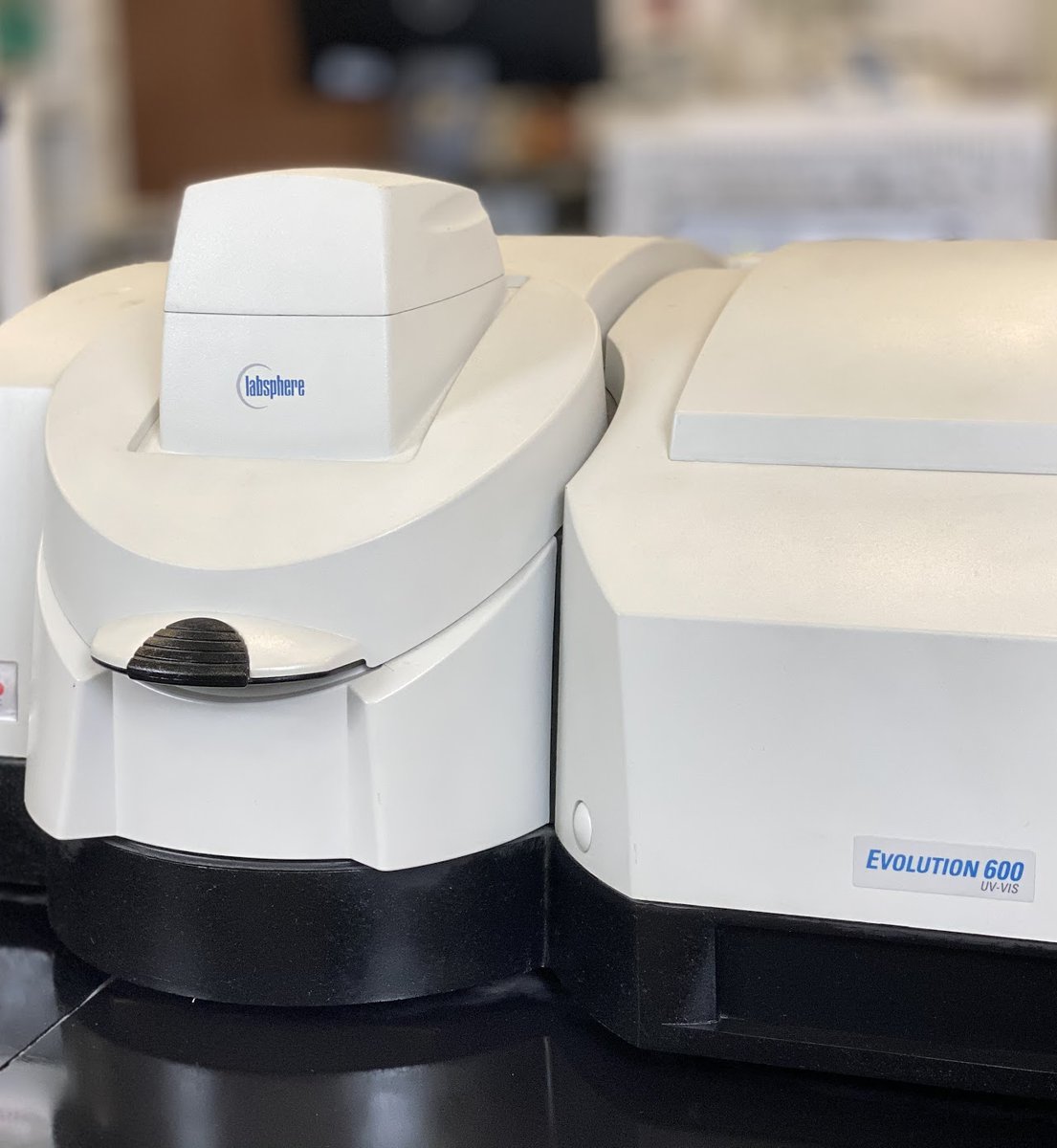
Location:
Chemistry department
Building #75, Room #230
Scientist In-Charge:
Name: Mr. Malak Al-Khaldi
Phone: 4588
E-mail: malak.alkhaldi@kfupm.edu.sa
Evolution 600 UV-VIS
Fully tested, reconditioned Thermo Scientific Evolution 600 UV-Vis Spectrophotometer.
High Performance Double Beam Scanning UV-Vis Spectrophotometer
The optical design of the Evolution 600 includes deuterium and tungsten sources and a high-performance photomultiplier detector. These features provide enhanced high-level performance for the Material Science market and general research applications.
Main Features:
- Wavelength range 190 to 900nm
- Auto aligning optics
- Deuterium and Tungsten lamp light sources
- Variable spectral bandwidth - 0.2nm-4nm
- Sample and reference cuvette holders
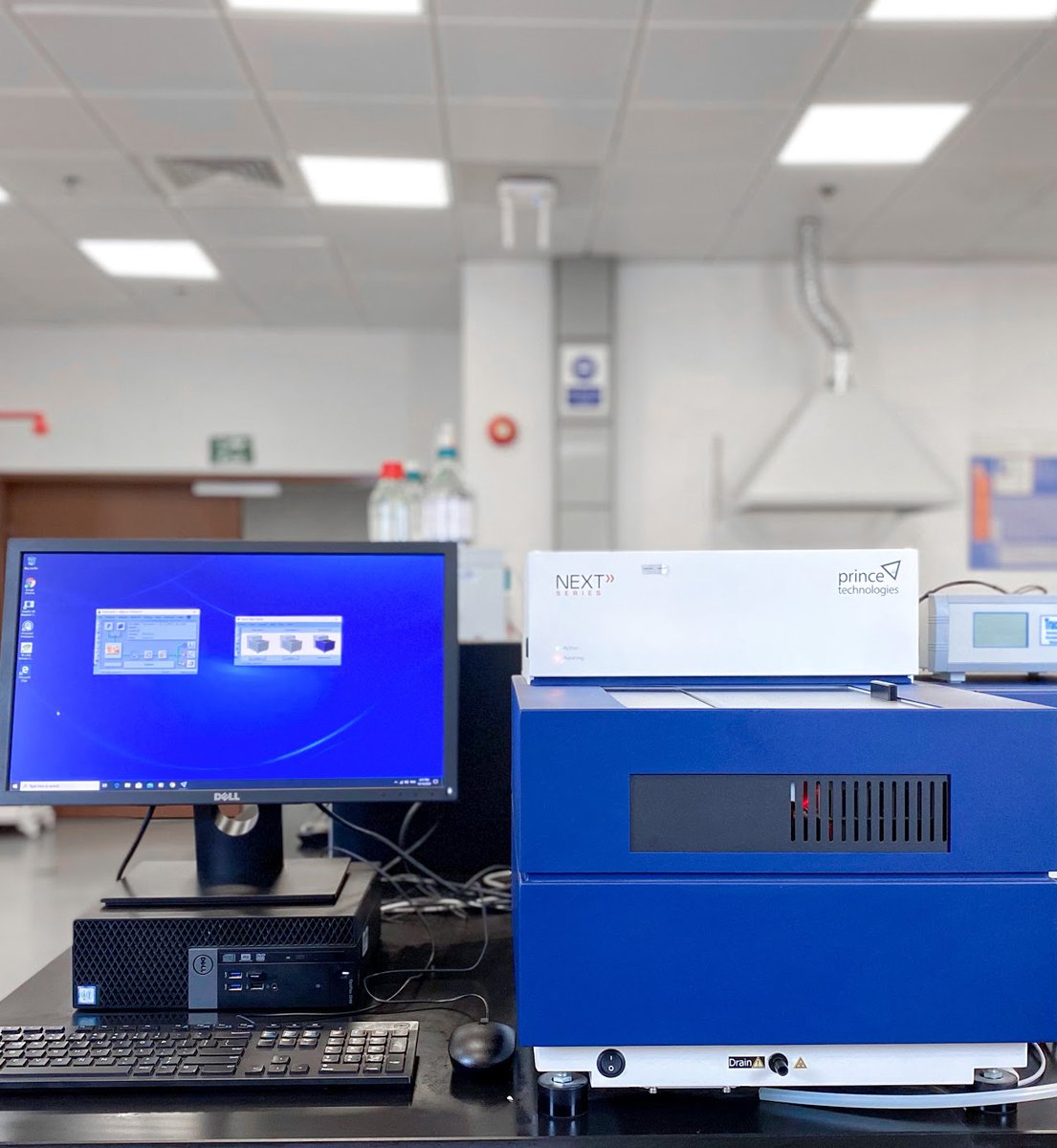
Location:
Chemistry department
Building #75, Room #230
Scientist In-Charge:
Name: Mr. Malak Al-Khaldi
Phone: 4588
E-mail: malak.alkhaldi@kfupm.edu.sa
Capillary Electrophoresis
The PrinCE Next|870 is a fully flexible, automated capillary electrophoresis system, comprised of an inlet-and outlet autosampler, integrated DAD and configurable flexible external capillary outlet. The system’ DAD 190-610nm can be used simultaneously with a wide selection of external detectors. The system is supplied with a PC, a start-up kit and pre-installed Clarity DAD for PrinCE Next software for data-acquisition and analyses. It is designed for easy, user-friendly operation with fast and reliable precision for routine analyses as well as method development.
Main Features:
- User configurable multi effective capillary length
- User replaceable sample and buffer trays
- Pressure injection from 96 well plate
- Ultra short capillary length to external detectors
- High pressure up to 10 bar by gas cylinder at one or both capillary ends
- Ability to perform fraction collection under precisely controlled circumstances
- Sufficient capillary compartment space for external remote detector cells, giving you a whole new range of research possibilities
- Allows robotic arms to operate the unique designed sliding door as well as load and unload well plates for unattended operation
- High performance capillary cooling with high air flow speed
- Full temperature control of sample and buffer cooling during injection and analyses
- Broad range of accessories and consumables
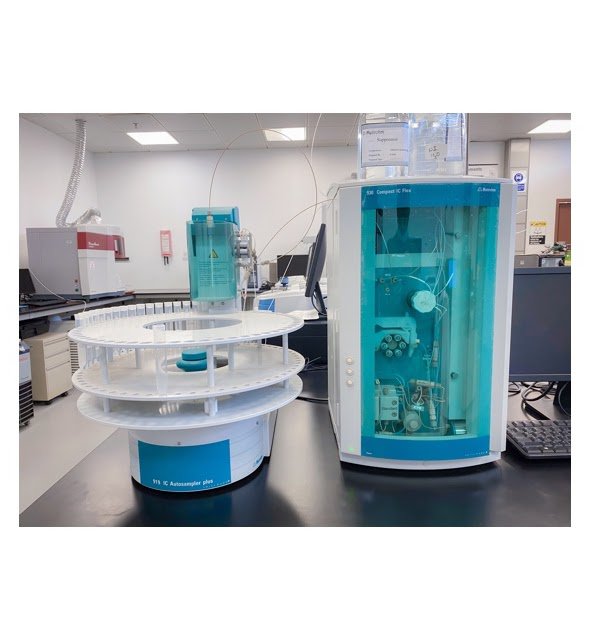
Location:
Chemistry Department
Building #75, Room #230
Scientist In-Charge:
Ion Chromatography System
The 930 Compact IC Flex is the intelligent Compact IC instrument without suppression. The instrumentation be used with any separation and detection methods. Typical areas of application: Anion or cation determinations without suppression with conductivity detection.
Main Features:
Name: Mr. Malak Alkadi
Phone: 4588
E-mail: malak.alkhaldi@kfupm.edu.sa
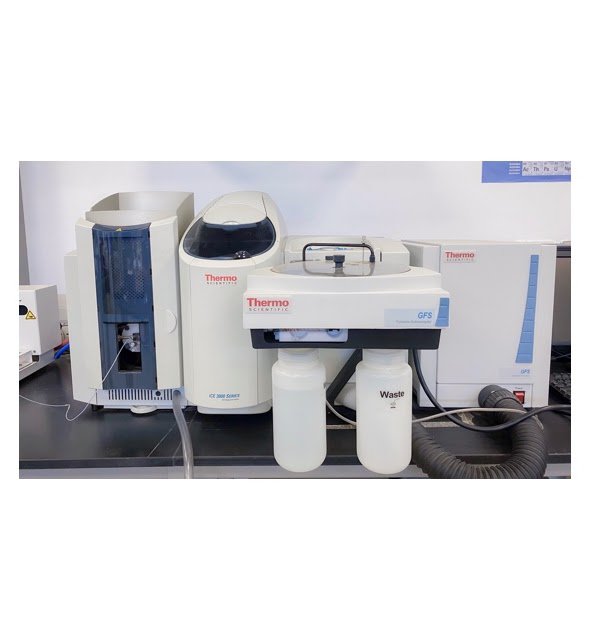
Location:
Chemistry department
Building #75, Room #230
Scientist In-Charge:
Name: Mr. Malak Al-Khaldi
Phone: 4588
E-mail: malak.alkhaldi@kfupm.edu.sa
Atomic Absorption Spectrometers
The Thermo Scientific™ iCE™ 3300 AAS provides a complete elemental analysis solution incorporating simplicity and an innovative design to achieve superior performance. The iCE 3300 AAS makes even themost complicated analyses simple. The high precision, double beam optics provide unrivalled performance, unparalleled detection limits and exceptional optical stability. The innovative hardware design minimizes the footprint of the instrument and ensures that day-to-day analysis and maintenance is simple and minimal. Safety comes as standard with integrated hardware safety features and automaticMFC gas controls.
Main Features:
- Unbeatable Flame performance with superior detection limits and a fully inert sample system.
- Graphite Furnace obtains drift free results from automated cuvette heating control meaning, for accurate, repeatable analysis.
- Guaranteed Deuterium background correction for high accuracy.
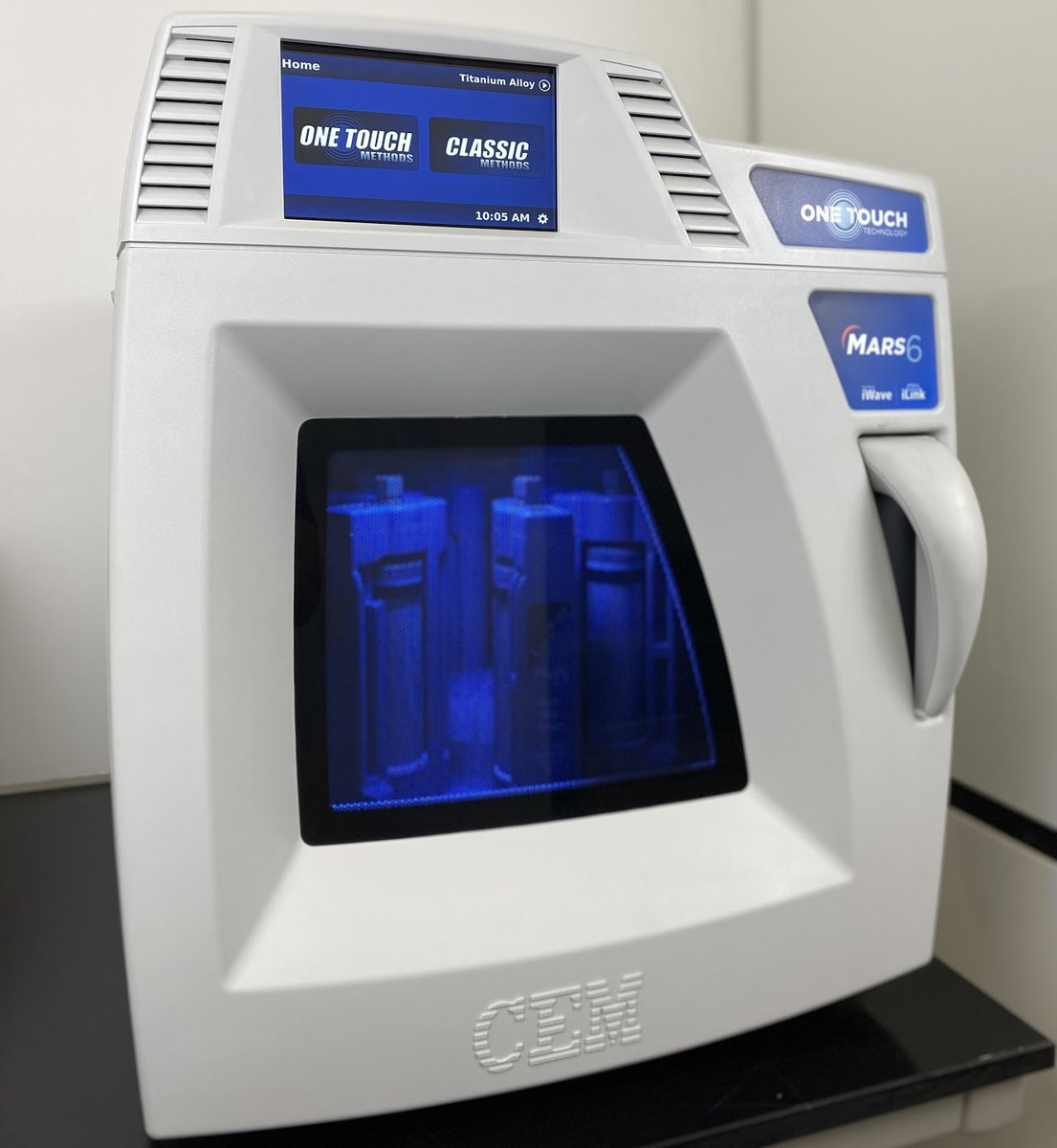
Location:
Chemistry department
Building #75, Room #230
Scientist In-Charge:
Name: Mr. Malak Alkadi
Phone: 4588
E-mail: malak.alkhaldi@kfupm.edu.sa
Microwave Digestion System
The MARS™ 6 is a microwave acid digestion system that produces clear digestate fromsamples for elemental analysis by ICP, ICP-MS, or AA. Rocks, plants, soil, foods, pharmaceuticals, plastics, metals, and more can be digested easily, using preloaded methods.
Main Features:
- Contactless in-situ temperature measurement
- Sensors that detect vessel type and count
- Hundreds of preprogrammed methods
- Easy to use vessels for every application
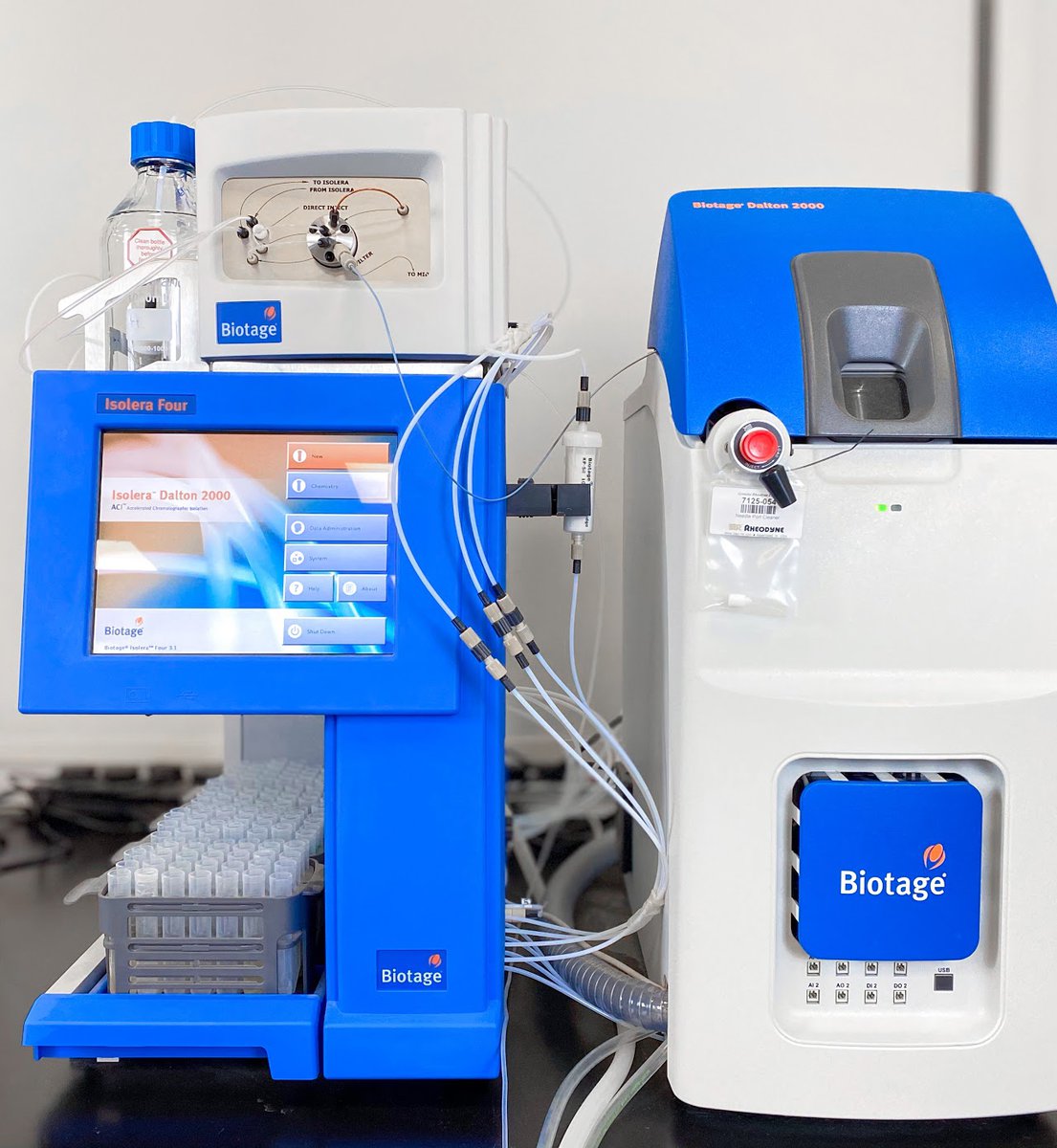
Location:
Chemistry department
Building #75, Room #230
Scientist In-Charge:
Name: Mr. Malak Alkadi
Phone: 4588
E-mail: malak.alkhaldi@kfupm.edu.sa
Flash Chromatography
Biotage® Dalton 2000 is a compact single quadrupole mass detector with simultaneous positive and negative polarity switching. Biotage® Dalton 2000 uses an atmospheric pressure chemical ionization source to ionize substances, which can then be identified by their mass-to-charge ratios (m/z).Biotage® Dalton 2000 allows you to analyze samples and automatically use the m/z ratio(s) of the identified substance(s) for flash purification.
Main Features:
- Compound identification by mass during purification and by direct injection analysis
- Fully automated integration of Flash purification and mass detection via the Isolera™ Dalton Nanolink
- Automatically accommodates different flash flow rates
- Simple wizard-based approach to method development
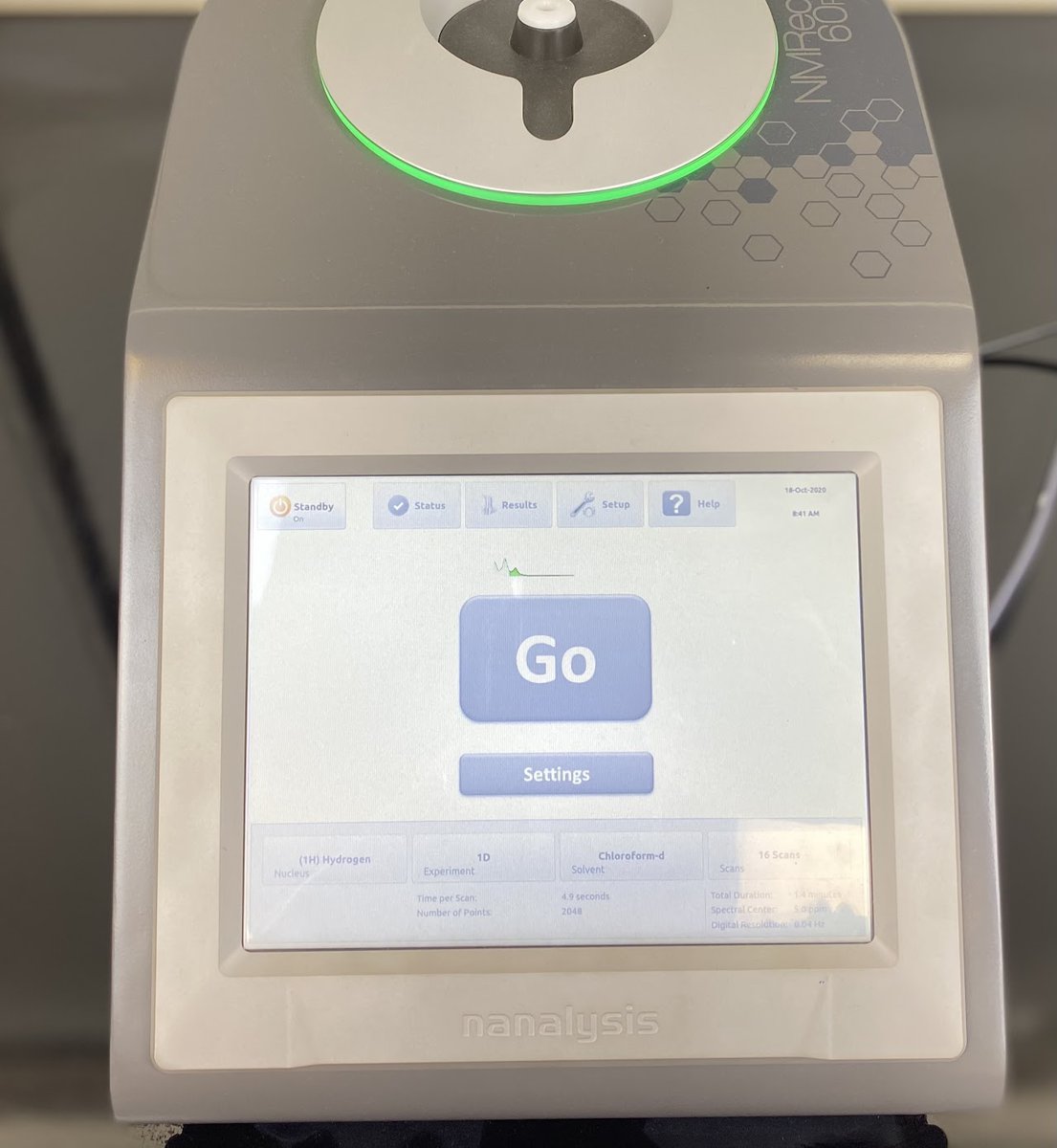
Location:
Chemistry department
Building #75, Room #230
Scientist In-Charge:
Name: Mr. Malak Al-Khaldi
Phone: 4588
E-mail: malak.alkhaldi@kfupm.edu.sa
Benchtop NMR 60 MHz
Educational curricula trends are shifting towards hands-on, guided-inquiry approaches that help students learn meaningfully. As chemistry laboratories provide the perfect opportunity for students to supplement cognitive learning with psychomotor skills, an increasing number of analytical characterization techniques have been incorporated into procedures (e.g., UV-Vis, IR). Even though NMR is the most commonly used characterization technique in inorganic and organic chemistry, superconducting NMR instrumentation are usually the least available to undergraduate students.
Main Features:
- 60 MHz (1.4 T)
- Standard 5mm NMR tubes
- Single nuclei acquisition (1H or 19F)
- less than 1.0 Hz (20 ppb) at FWHM
- 100:1 SNR, single scan 1% ethylbenzene
- Standard modifiable experiments (e.g., 1D, T1, T2, COSY, JRES)
- Pulse Program Control
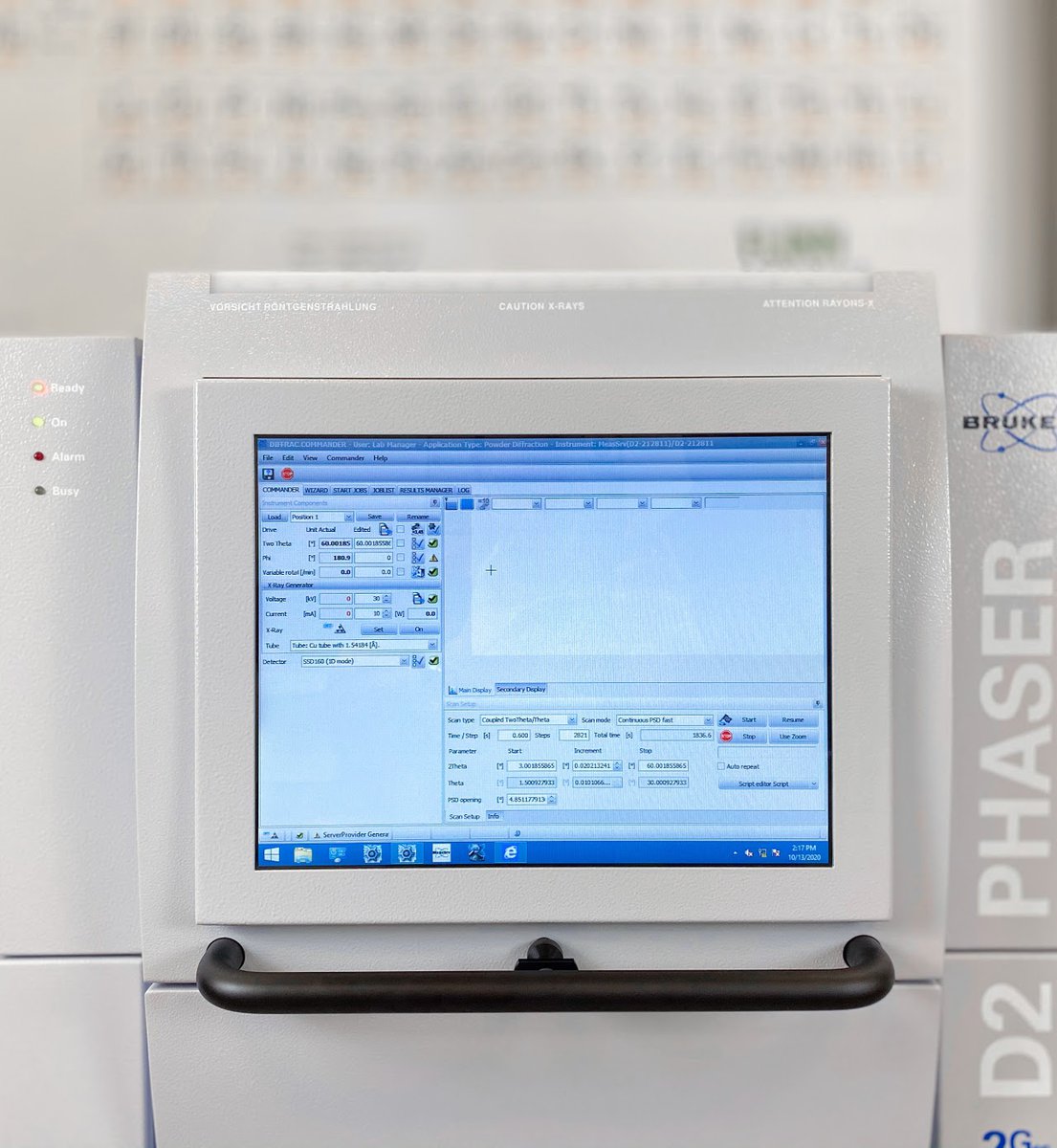
Location:
Chemistry department
Building #75, Room #230
Scientist In-Charge:
Name: Mr. Malak Alkadi
Phone: 4588
E-mail: malak.alkhaldi@kfupm.edu.sa
Benchtop X-Ray Diffraction
The D2 PHASER delivers data quality and collection speed that, up to recently, was thought impossible with a benchtop XRD system.
Due to its compact size, low weight, and ease-of-use design, the system is conveniently mobile, without the need for complicated infrastructure, large, heavy-load work benches, or vendor installation and alignment. A standard power outlet and a few minutes are all that is required to take they system from fully packaged to outstanding results.
Main Features:
- Virtual elimination of background from sample fluorescence and Bremsstrahlung scattering
- Significantly improved peak to background boosting lower limits of detection and uantification
- Clean diffraction line profile shapes without metal filter artefacts to improve peak fitting results and accuracy in quantitative phase analysis
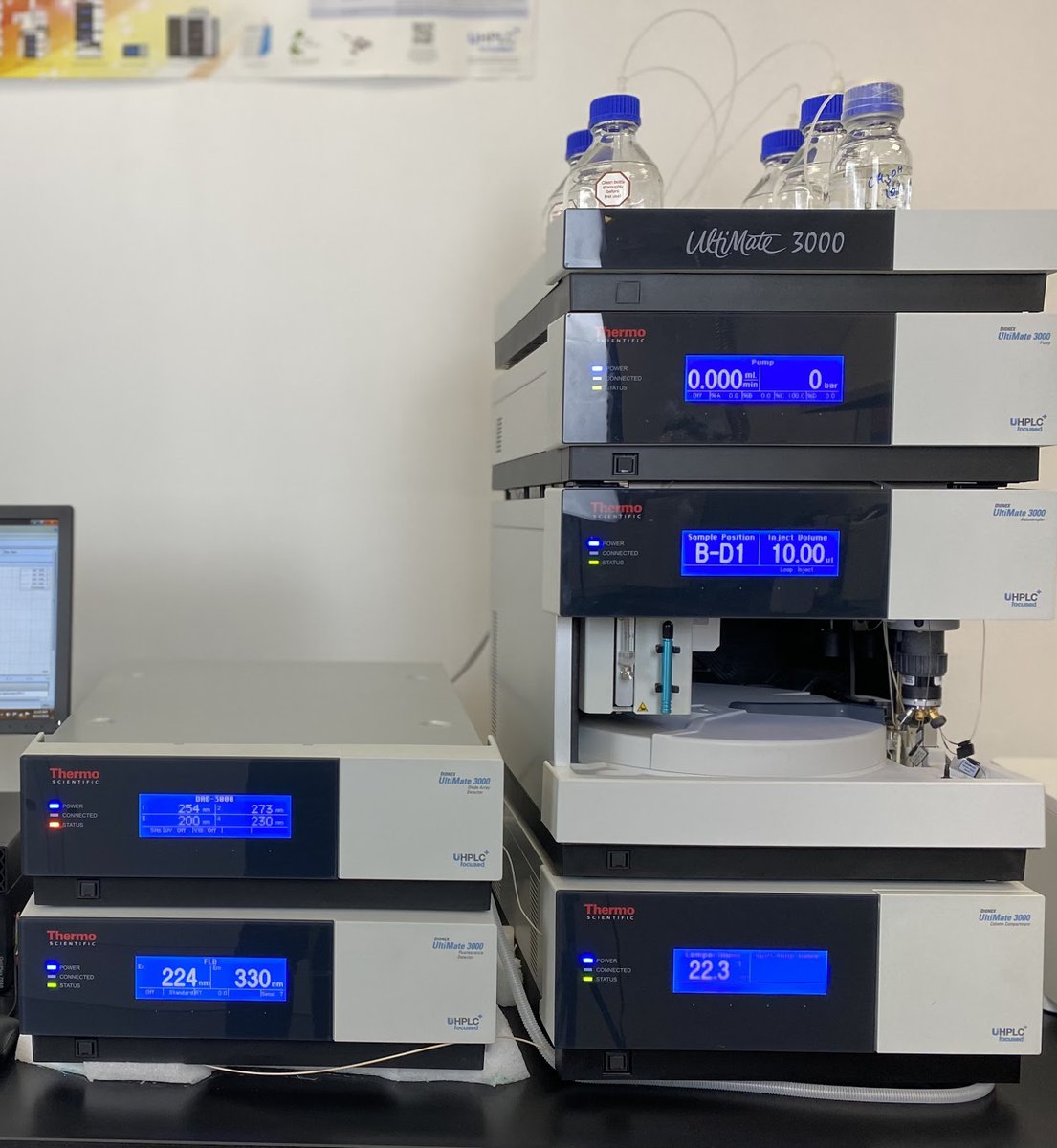
Location:
Chemistry department
Building #75, Room #230
Scientist In-Charge:
Name: Mr. Malak Alkadi
Phone: 4588
E-mail: malak.alkhaldi@kfupm.edu.sa
High Performance Liquid Chromatography
High Performance Liquid Chromatography (HPLC) is a highly versatile technique that separates components of a liquid mixture based on their different interactions with a stationary phase. Samples with high molecular weight, even complex compounds, are important to be detected in HPLC. A system that contains five different modules and works as one namely, pump, sampler, column compartment (with oven) , detector and computer. The column, as the heart of the instrument, makes the instrument selective and sensitive to hundreds or thousands of analyte in liquid solution. It has a wide range of application areas such as pharmaceutical, food, biotechnology, environmental, agriculture, etc.
Main Features:
Pump , binary or quaternary, is operated with high pressure and maintains a constant flow of mobile phase through the HPLC system.
Column, analytical or preparative, is responsible for adequate separation of analytes and the efficiency correlates with the column inner diameter, length, type and particle size of the column packing material, as the stationary phase.
Detector is capable of determining the identity and concentration of eluting compounds in the mobile phase. Available detectors are Diode Array Detector (DAD), Fluorescence Detector, Conductivity Detector and Mass Spectrometer.
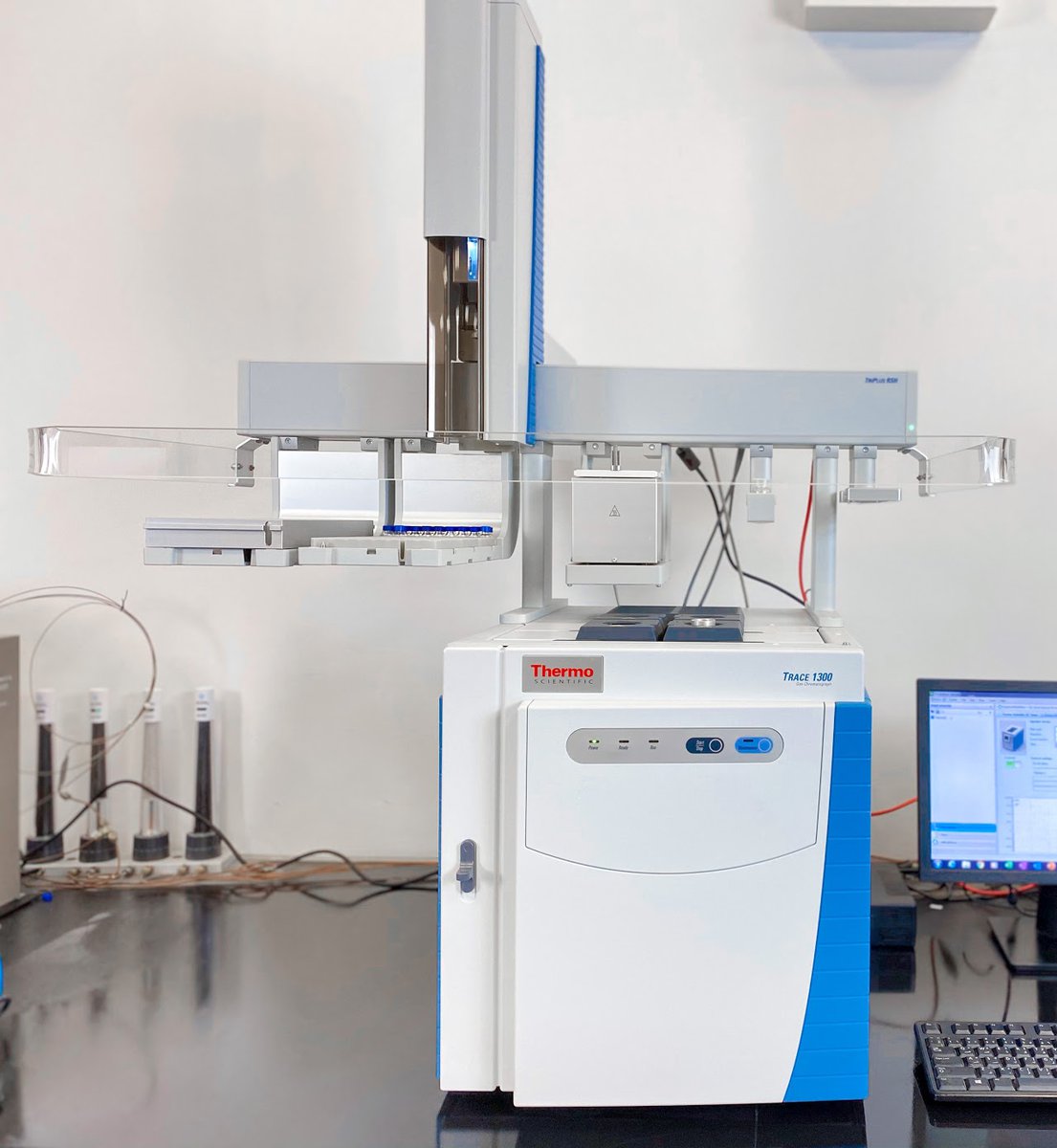
Location:
Chemistry department
Building #75, Room #230
Scientist In-Charge:
Name: Mr. Malak Alkadi
Phone: 4588
E-mail: malak.alkhaldi@kfupm.edu.sa
Gas Chromatography (GC)
Agilent Gas Chromatography (GC) is a user-friendly instrument that used to separate organic compounds from volatile to low molecular weight analytes. It has a high degree of analysis automation and meets the user requirements with respect to its sensitivity and reproducibility. ChemStation software provides the instrument to control the system whether online or offline mode. Application varies such as environmental monitoring, eg. disinfection by-products and industrial application such as oil and gas.
Main Features:
A regulated and purified carrier gas source, with traps for water, hydrocarbons and oxygen is recommended, which moves the sample through the GC.
• A manual or automatic injection with different sampling techniques like liquid, headspace and solid phase micro extraction (SPME).
• An inlet, which also acts as a vaporizer for liquid samples. The most common inlets are injection ports and sampling valves.
• A column, in which the time separation occurs and most separations are highly temperature-dependent, so the column is placed in a well-controlled oven. Polar and non-polar columns are used on case to case basis.
• A detector, which responds to the components as they occur by changing its electrical output.
Detectors used are following with different units:
a. Flame Ionization Detector (FID) - for liquid and gas samples
b. Helium Ionization Detector (HID)